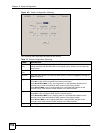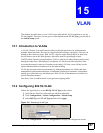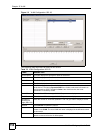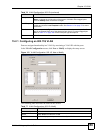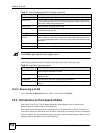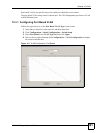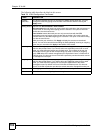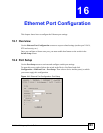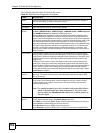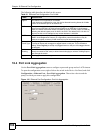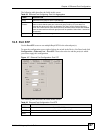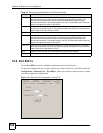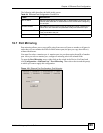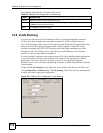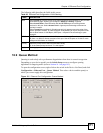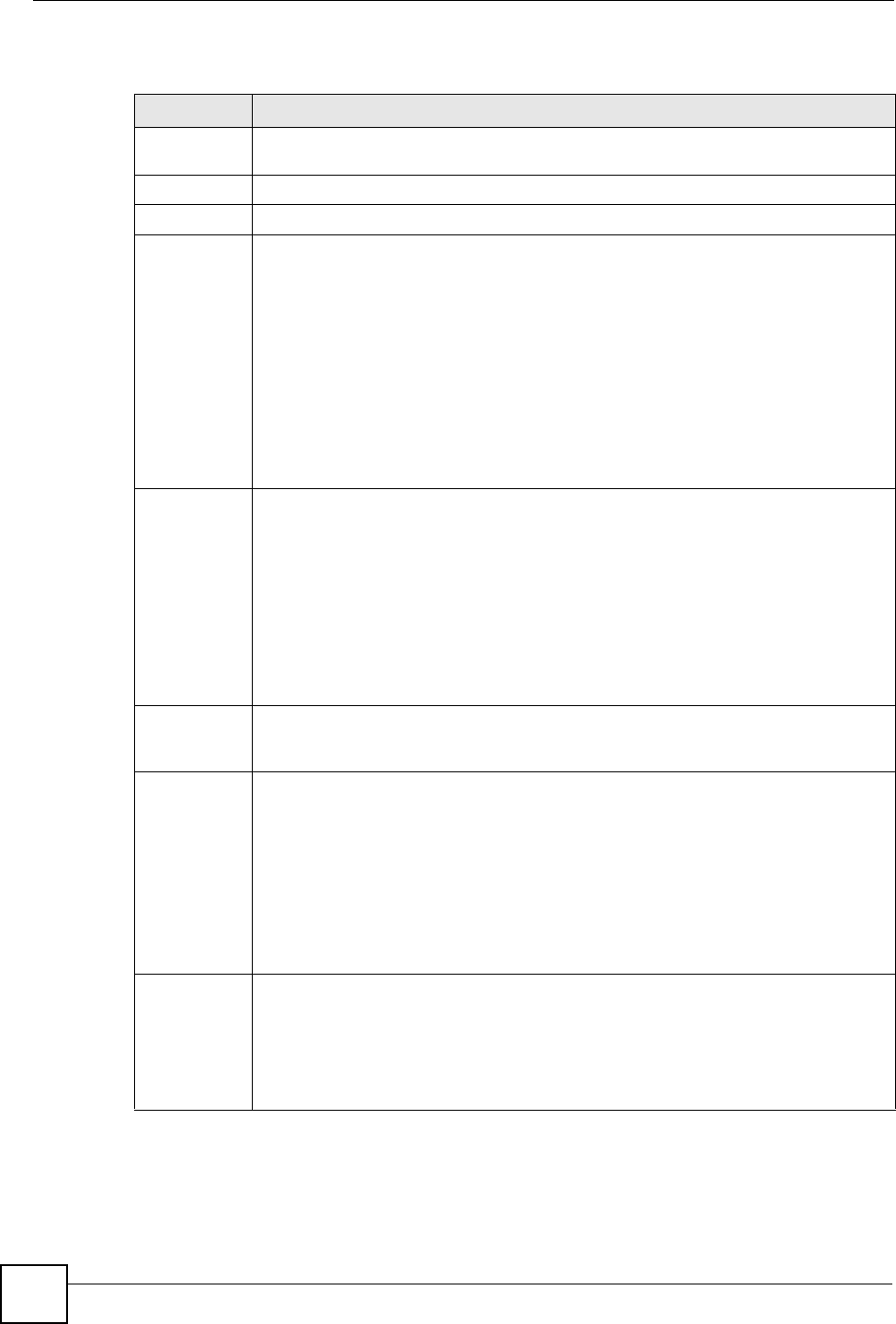
Chapter 16 Ethernet Port Configuration
NetAtlas Workgroup User’s Guide
164
The following table describes the fields in this screen.
Table 80 Ethernet Port Configuration: Port Setup
LABEL DESCRIPTION
Active Select this check box to enable a port. The factory default for all ports is enabled. A
port must be enabled for data transmission to occur.
Type This field displays the port type and port speed.
Port Name Enter a descriptive name for identification purposes.
Speed/
Duplex
Select the speed and the duplex mode of the Ethernet connection on this port. Choices
are Auto, 10M/Half Duplex, 10M/Full Duplex, 100M/Half Duplex, 100M/Full Duplex
and 1000M/Full Duplex (for Gigabit/mini-GBIC ports only).
Selecting Auto (auto-negotiation) makes one Ethernet port able to negotiate with a
peer automatically to obtain the connection speed and duplex mode that both ends
support. When auto-negotiation is turned on, an Ethernet port on the switch negotiates
with the peer automatically to determine the connection speed and duplex mode. If the
peer Ethernet port does not support auto-negotiation or turns off this feature, the
switch determines the connection speed by detecting the signal on the cable and using
half duplex mode. When the switch’s auto-negotiation is turned off, an Ethernet port
uses the pre-configured speed and duplex mode when making a connection, thus
requiring you to make sure that the settings of the peer Ethernet port are the same in
order to connect.
Flow Control A concentration of traffic on a port decreases port bandwidth and overflows buffer
memory causing packet discards and frame losses. Flow Control is used to regulate
transmission of signals to match the bandwidth of the receiving port. The switch uses
IEEE 802.3x flow control in full duplex mode and backpressure flow control in half
duplex mode.
IEEE 802.3x flow control is used in full duplex mode to send a pause signal to the
sending port, causing it to temporarily stop sending signals when the receiving port
memory buffers fill. Back Pressure flow control is typically used in half duplex mode to
send a "collision" signal to the sending port (mimicking a state of packet collision)
causing the sending port to temporarily stop sending signals and resend later. Select
Flow Control to enable it.
802.1p
Priority
The switch uses this priority value for incoming frames without an IEEE 802.1p priority
queue tag. The switch uses this priority value internally and does not add an IEEE
802.1p priority tag.
Intrusion Lock Select the Intrusion Lock check box to enable this security feature on a selected port
on the switch. If an Ethernet cable is disconnected from the port, intrusion locking
prevents access once a cable is reconnected. This limits risk from unauthorized
access such as hacking.
Note: You cannot access a port with intrusion locking enabled after a
cable is disconnected and then reconnected. You must clear
and re-select the Intrusion Lock check box to allow access to
the port again.
BPDU
Control
Configure the way to treat BPDUs received on this port. You must activate bridging
control protocol transparency in the Switch Setup screen first.
Select Peer to process any BPDU (Bridge Protocol Data Units) received on this port.
Select Tunnel to forward BPDUs received on this port.
Select Discard to drop any BPDU received on this port.
Select Network to process a BPDU with no VLAN tag and forward a tagged BPDU.



